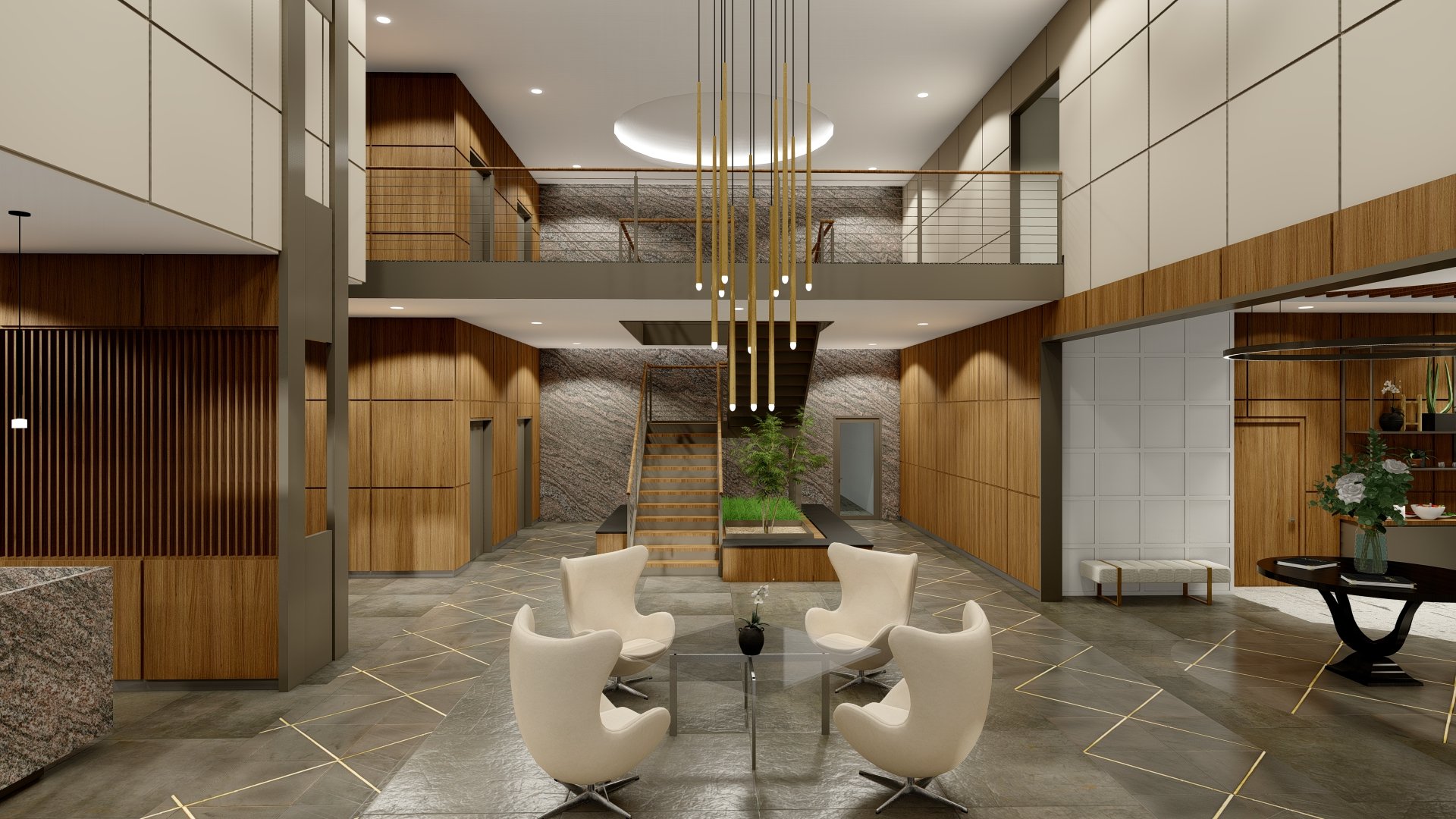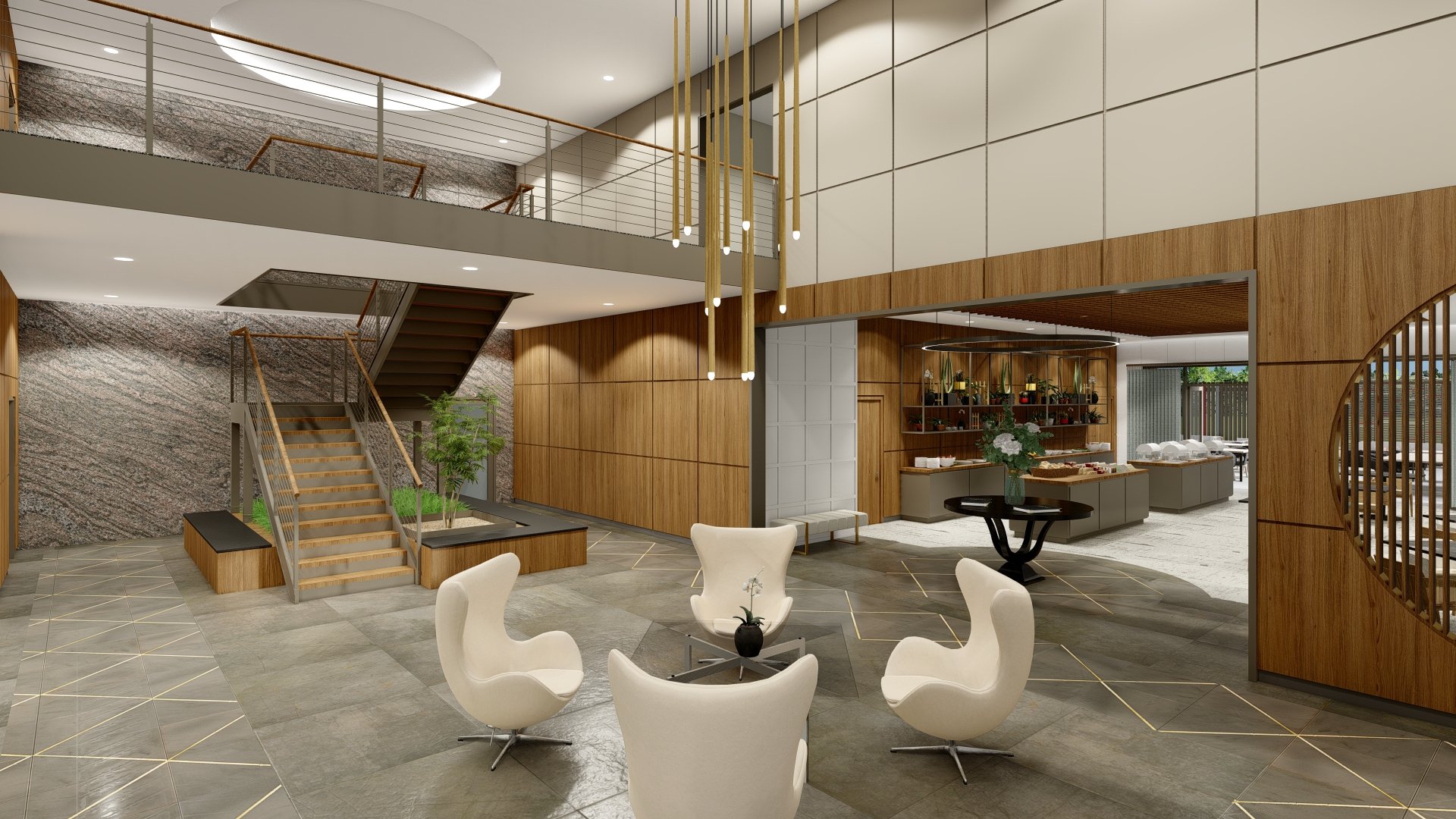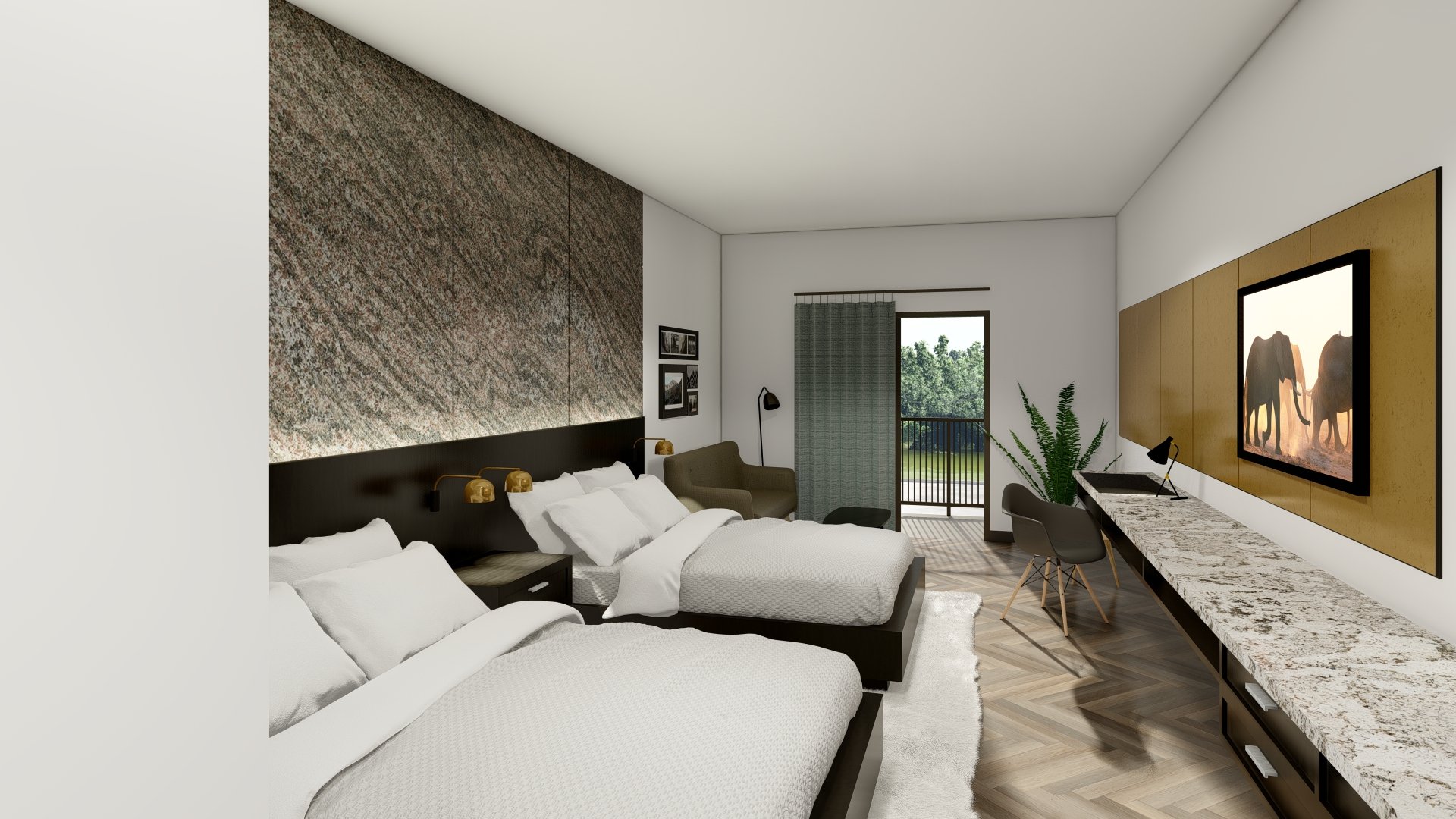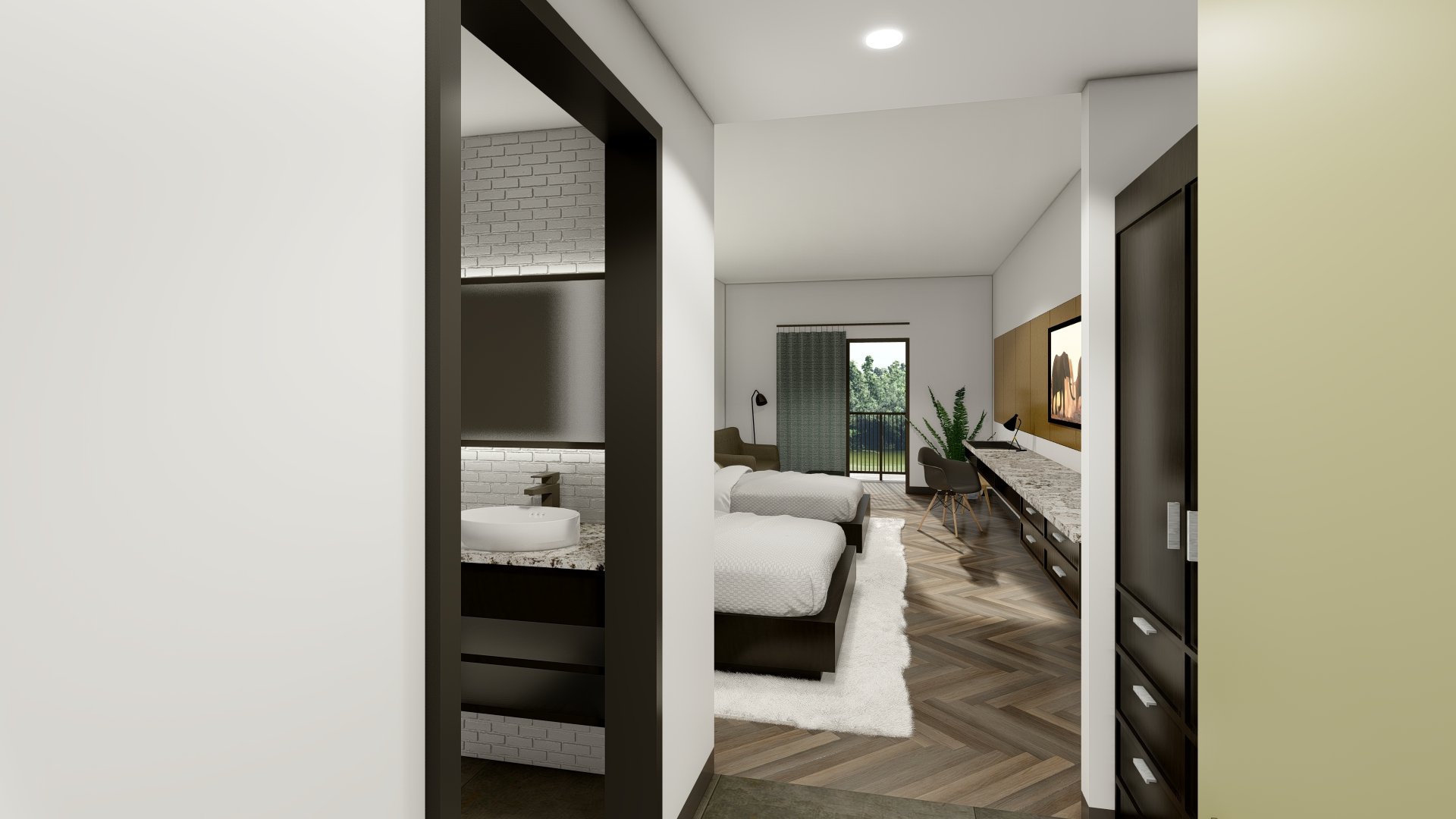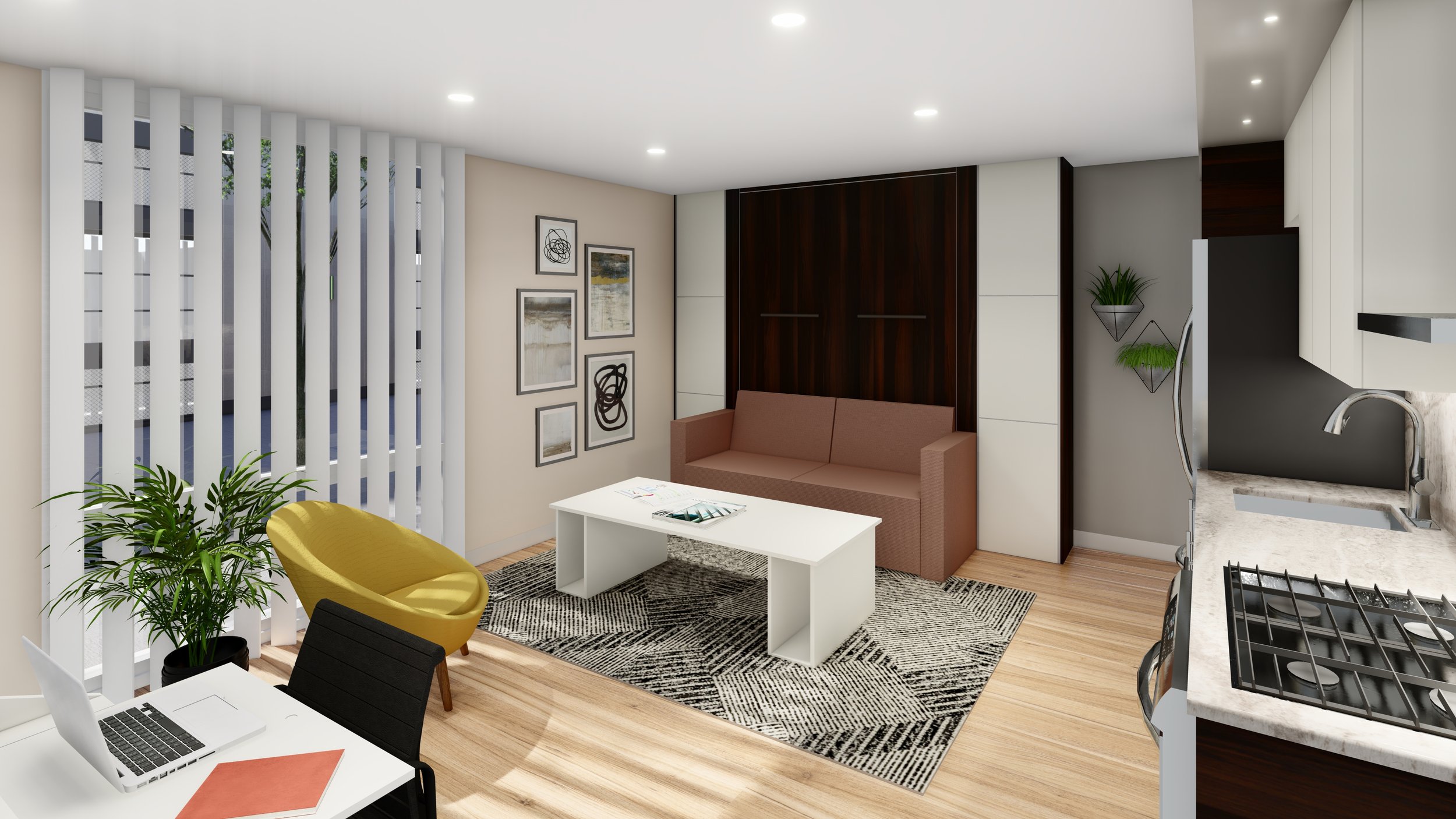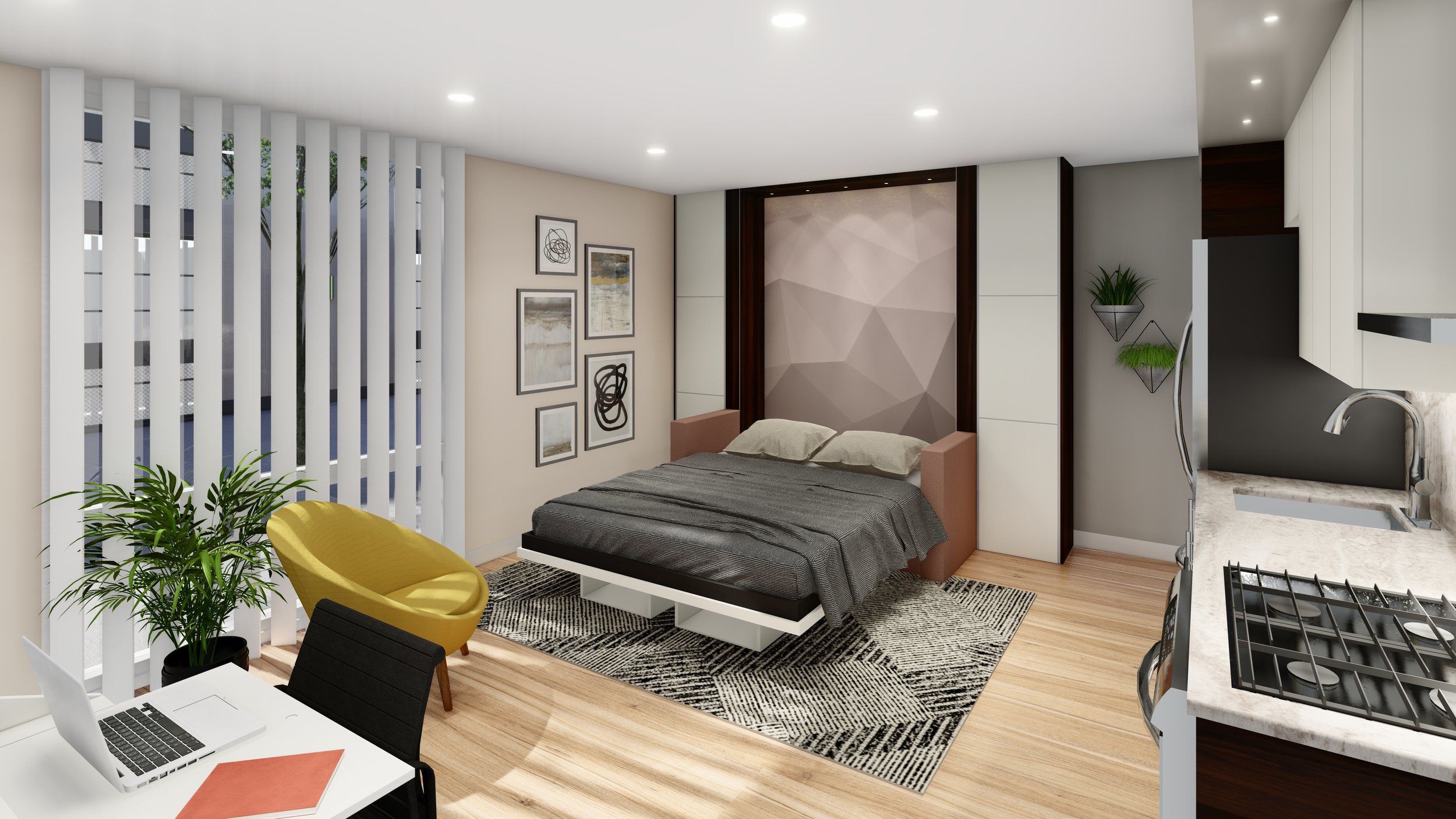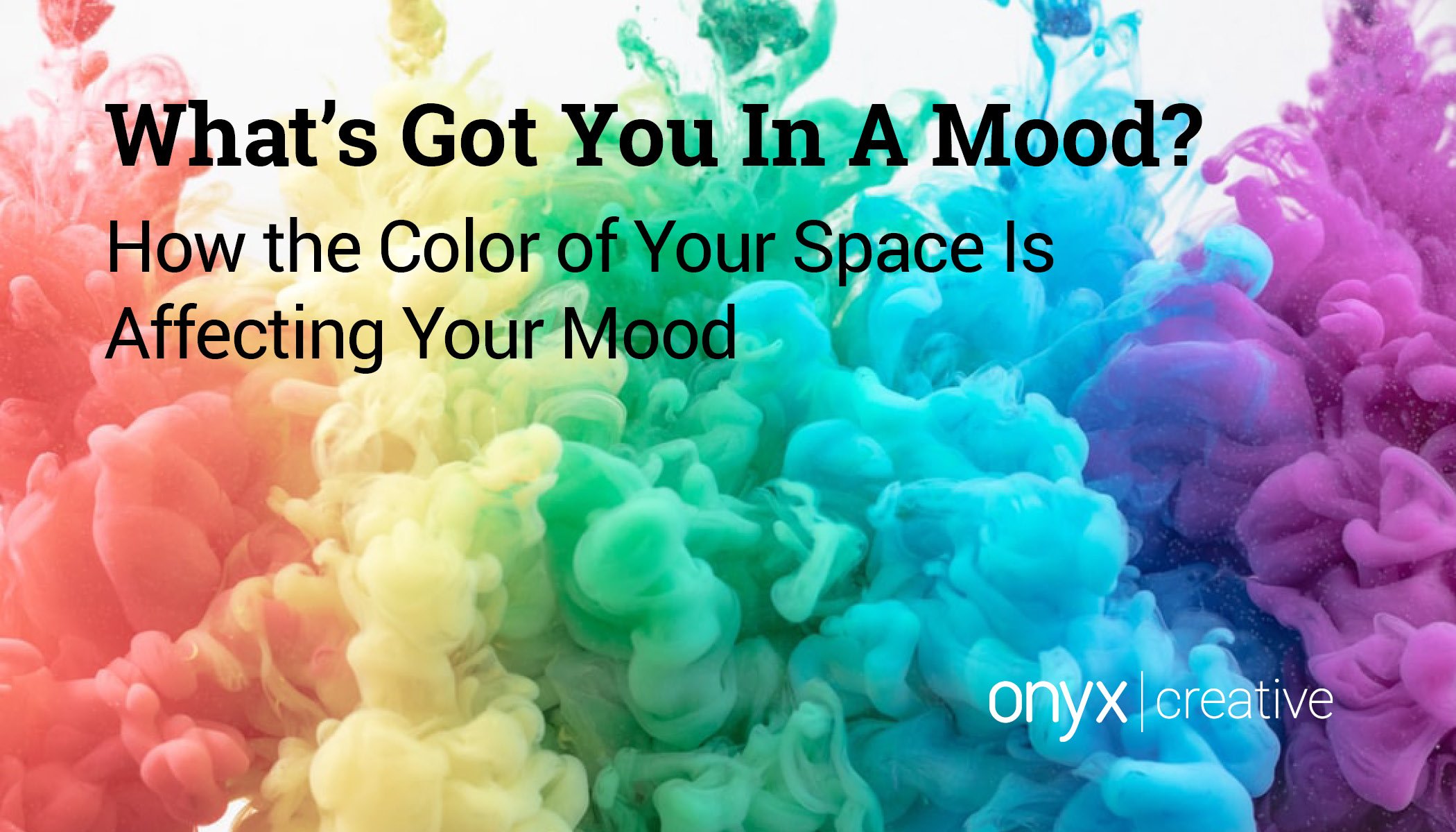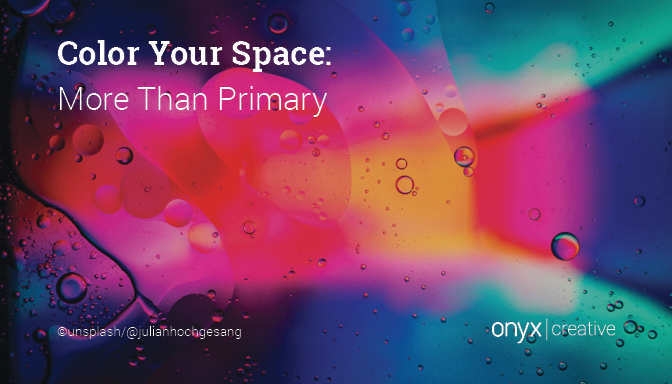Staying at hotels can be tiring. New places and different sounds come with hotel living and cause guests to struggle to get a full night’s rest. Some hotel guests wish they had more sleep to be more productive, positive, and full of energy the next day. There are so many benefits and rewards when people achieve the recommended amount of hours per night. According to doctor Abhinav Singh, who specializes in sleep medicine reports, seven to nine hours of sleep per night is recommended for adults [1]. Babies, children, and teens are recommended to have even more sleep. This is why designing hotel rooms is important. Design and research are where it all starts, with the main focus on increasing the amount and quality of sleep for guests. Guests will feel less tired, and hotel owners will have more guests booking rooms. The correct design helps benefit both the consumer and customer.
Hotel Lobby Concept
Temperature
Hotel rooms can have unpredictable temperatures, leaving travelers wondering whether they will need to bundle up or remove layers. The ideal room temperature is anywhere from sixty-five to sixty-eight degrees Fahrenheit. Before the body falls asleep, it loses one to two degrees Fahrenheit. The cooler the traveler’s body becomes, the faster they can sleep. Once asleep in the cool atmosphere, the body begins to shed more weight in this environment. The room temperature plays an important role in better sleep and health combined. Guests should have access to a thermostat inside the room to allow them to control their ideal temperature.
Hotel Room Concept
Lighting
In order to achieve ample sleep, hotels need to provide darkness for the eyes to fully rest as well as appropriate light levels and different lighting types to support future restful sleep. Black-out curtains can be placed to cover windows, hindering any natural light from flooding the space. Hotels can provide eye masks for guests to further block out miscellaneous light sources. When lighting needs to be used prior to sleep, the lighting by the bed should be dim, soft, and indirect. The perfect level for this lighting is between ten to twenty lumens per square foot. A brighter, direct light can be placed in the bathroom, where it is closed off from the bedroom. The ideal light in the bathroom is between seventy to eighty lumens per square foot. Blue light-emitting from electronic devices can interrupt the circadian rhythm and push back REM sleep. The less time people spend on their devices before bed the better. Doctor Walia from the Cleveland Clinic, who specializes in sleep, advocates avoiding these devices an hour before bedtime [2]. While LED light is more efficient, it produces more blue light than dimmer red and yellow lights, which are more suitable for the bedroom.
Apartment Design Concept
Sound
Noise is all around us. Busy streets, car horns, yelling voices, and household appliances all contribute to unwanted sounds. Designers can create ways to minimize, reduce, and eliminate noise, helping people’s brains relax and transition into sleep mode. The perimeter of the walls in the hotel room should have a high soundproofing system. This can be accomplished with thicker and heavier insulation within the walls. The ceilings could have acoustical properties such as panels, slats, or clouds. The flooring can be carpeted to add more absorption. The doors can be soft closing to eliminate the excess noise of a door slamming. White noise is an alternative option when silence is difficult to achieve. White noise has more of a consistent rhythm than all the other sounds occurring randomly. This noise has the same amplitude and intensity as an audible range. When white noise is created, other surrounding noises get drowned out while the white noise masks over it. Beyond design, hotels can implement quiet hours to help reduce noises during sleeping hours. The Tabriz University of Medical Science reports the benefits of silence to consist of better focus, decision making, immune system, brain chemistry, relaxation, and sleep [3].
Micro Apartment Concept
Benefits
If guests can obtain the recommended amount of sleep, it can lead to more positive behavior. Worker safety and job satisfaction improve when guests are fully rested. Hotels benefit from increased guest satisfaction as guests are more likely to return when they have a good experience. Doctor Gabriela Pichardo, who specializes in internal medicine, says an ample amount of sleep increases memory and learning of information [4]. Blood pressure levels can decrease producing a healthier heart. Glucose levels can drop during sleep time to decrease type 2 diabetes. There are a multitude of design techniques that can be used when designing hotels and, if implemented correctly, a guest can benefit health-wise and achieve a blissful sleep.
Sources
1. https://www.sleepfoundation.org/how-sleep-works/how-much-sleep-do-we-really-need
3. https://www.ncbi.nlm.nih.gov/pmc/articles/PMC4923834/
4. https://www.webmd.com/sleep-disorders/benefits-sleep-more
5. https://www.asid.org/lib24watch/files/pdf/7109
6. https://www.bdcnetwork.com/blog/back-sleep-can-hotels-help-guarantee-full-eight-hours
7. https://www.stantec.com/en/ideas/the-dream-cabin-reinventing-what-it-s-like-to-sleep-in-a-hotel-room
8. https://www.aia.org/articles/6115135-how-are-architects-designing-for-a-good-ni
9. https://www.designhotels.com/culture/design/the-science-of-sleep-an-unscientific-study/
10. http://www.designcurial.com/news/how-to-design-a-good-nights-sleep-6206387/
11. https://www.gensler.com/blog/the-healthy-hotel-designing-for-a-new-experience
12. https://www.nytimes.com/2020/10/14/travel/future-hotel-design-virus.html
13. https://www.pooky.com/2019/09/24/how-much-light-do-you-need-in-a-room
14. https://soundguard.io/hotel-sound-reduction-soundproof-hotel-room/


